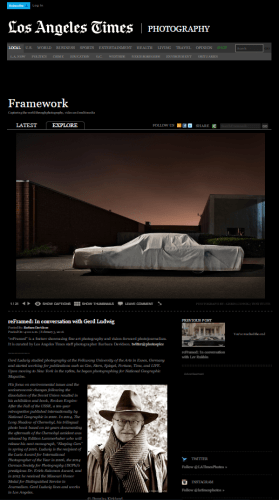
Gerd Ludwig studied photography at the Folkwang University of the Arts in Essen, Germany and started working for publications such as Geo, Stern, Spiegel, Fortune, Time, and LIFE. Upon moving to New York in the 1980s, he began photographing for National Geographic Magazine.
His focus on environmental issues and the socioeconomic changes following the dissolution of the Soviet Union resulted in his exhibition and book, Broken Empire: After the Fall of the USSR, a ten-year retrospective published internationally by National Geographic in 2001. In 2014, The Long Shadow of Chernobyl, his trilingual photo book based on 20 years documenting the aftermath of the Chernobyl accident was released by Edition Lammerhuber who will release his next monograph, “Sleeping Cars” in spring of 2016. Ludwig is the recipient of the Lucie Award for International Photographer of the Year in 2006, the 2014 German Society for Photography (DGPh)’s prestigious Dr. Erich-Salomon Award, and in 2015 he received the Missouri Honor Medal for Distinguished Service in Journalism. Gerd Ludwig lives and works in Los Angeles.
………………..
Q: You have a long and illustrious career as a documentary photographer. How did you get started in photography?
A: Like many other photographers, I got into photography through traveling. I initially studied German literature, political science, and physical education to become a teacher. After 3 semesters at university, I ended my studies and started hitchhiking throughout Europe. I supported myself with odd jobs as a bricklayer in Denmark and as a dishwasher in Norway, before I worked as a mess boy on a freight ship. During this time I began to take photos to collect memories from my journeys. Very quickly, I realized that I liked working with a camera and decided to make a living with what I really enjoyed – photography. Subsequently I studied photography with Prof. Otto Steinert at the Folkwangschule (now Folkwang University of the Arts).